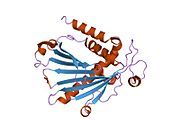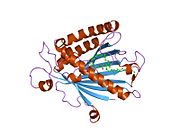Phosphatidylinositol transfer protein, alpha
| PITPNA | |||||||||||||||||||||||||||||||||||||||||||||||||||
|---|---|---|---|---|---|---|---|---|---|---|---|---|---|---|---|---|---|---|---|---|---|---|---|---|---|---|---|---|---|---|---|---|---|---|---|---|---|---|---|---|---|---|---|---|---|---|---|---|---|---|---|
 | |||||||||||||||||||||||||||||||||||||||||||||||||||
| |||||||||||||||||||||||||||||||||||||||||||||||||||
| Identifiers | |||||||||||||||||||||||||||||||||||||||||||||||||||
| Aliases | PITPNA, HEL-S-36, PI-TPalpha, PITPN, VIB1A, phosphatidylinositol transfer protein alpha | ||||||||||||||||||||||||||||||||||||||||||||||||||
| External IDs | OMIM: 600174 MGI: 99887 HomoloGene: 55958 GeneCards: PITPNA | ||||||||||||||||||||||||||||||||||||||||||||||||||
| |||||||||||||||||||||||||||||||||||||||||||||||||||
| |||||||||||||||||||||||||||||||||||||||||||||||||||
| |||||||||||||||||||||||||||||||||||||||||||||||||||
| |||||||||||||||||||||||||||||||||||||||||||||||||||
| |||||||||||||||||||||||||||||||||||||||||||||||||||
| Wikidata | |||||||||||||||||||||||||||||||||||||||||||||||||||
| |||||||||||||||||||||||||||||||||||||||||||||||||||
Phosphatidylinositol transfer protein alpha isoform is a protein that in humans is encoded by the PITPNA gene.[5]
Phosphatidylinositol transfer proteins are a diverse set of cytosolic phospholipid transfer proteins that are distinguished by their ability to transfer phospholipids between membranes in vitro (Wirtz, 1991).[6]
References[edit]
- ^ a b c GRCh38: Ensembl release 89: ENSG00000174238 – Ensembl, May 2017
- ^ a b c GRCm38: Ensembl release 89: ENSMUSG00000017781 – Ensembl, May 2017
- ^ "Human PubMed Reference:". National Center for Biotechnology Information, U.S. National Library of Medicine.
- ^ "Mouse PubMed Reference:". National Center for Biotechnology Information, U.S. National Library of Medicine.
- ^ Hay JC, Martin TF (Jan 1994). "Phosphatidylinositol transfer protein required for ATP-dependent priming of Ca(2+)-activated secretion". Nature. 366 (6455): 572–5. doi:10.1038/366572a0. PMID 8255295. S2CID 4348488.
- ^ "Entrez Gene: PITPNA phosphatidylinositol transfer protein, alpha".
Further reading[edit]
- Wirtz KW (1991). "Phospholipid transfer proteins". Annu. Rev. Biochem. 60: 73–99. doi:10.1146/annurev.bi.60.070191.000445. PMID 1883207.










